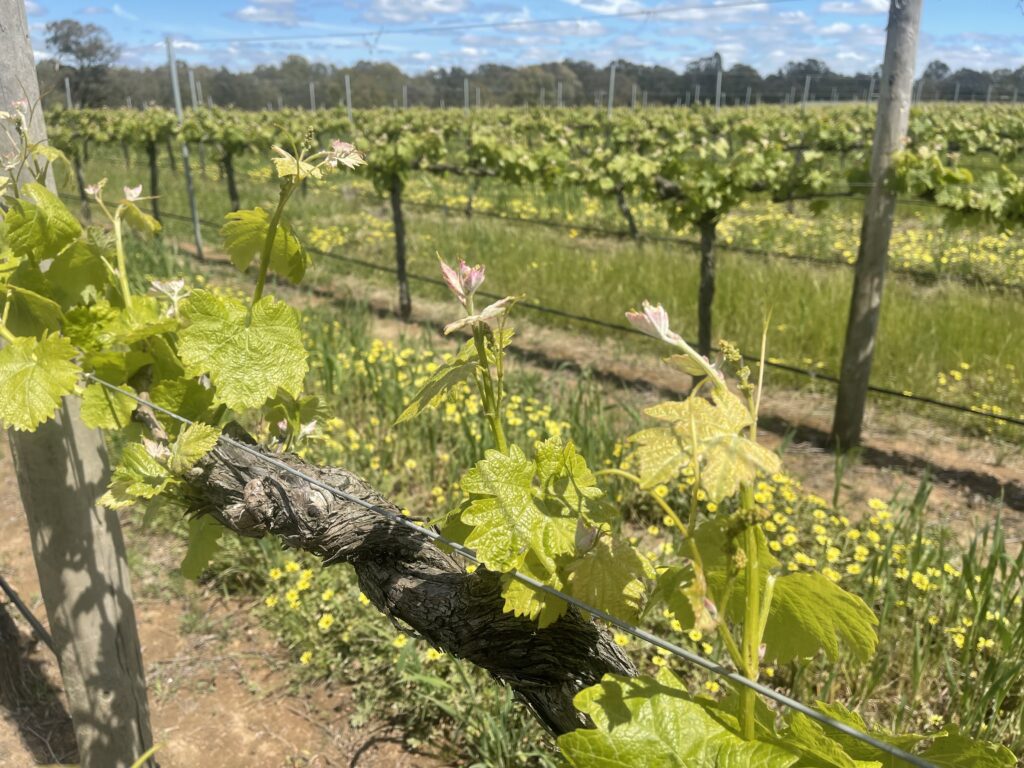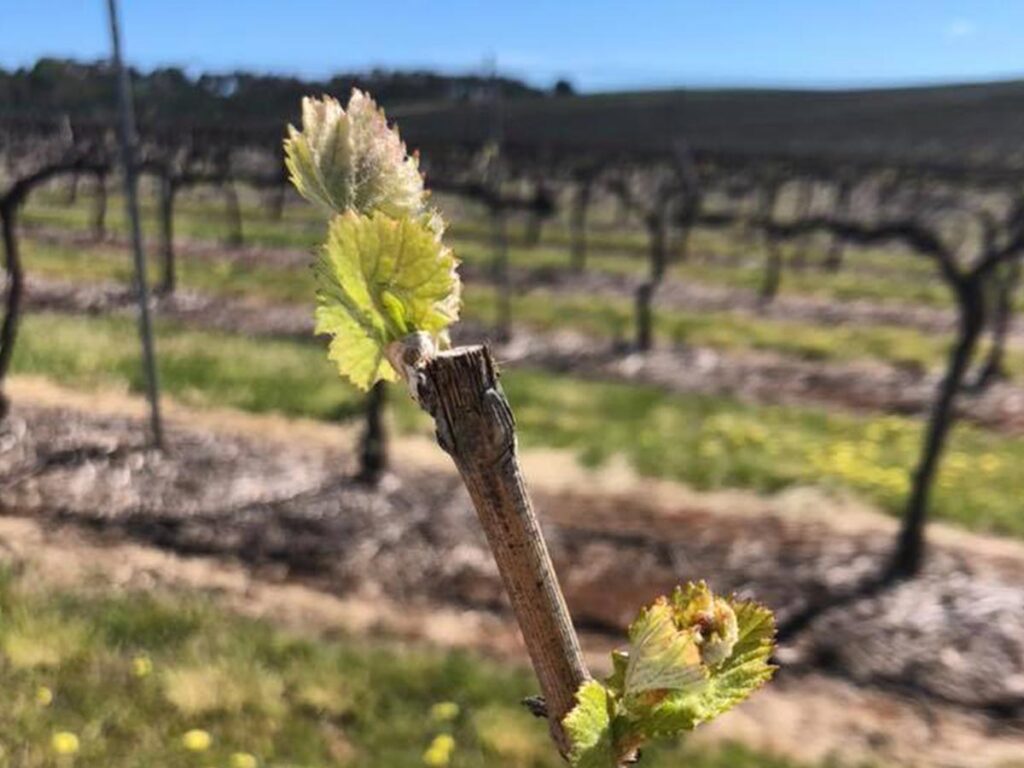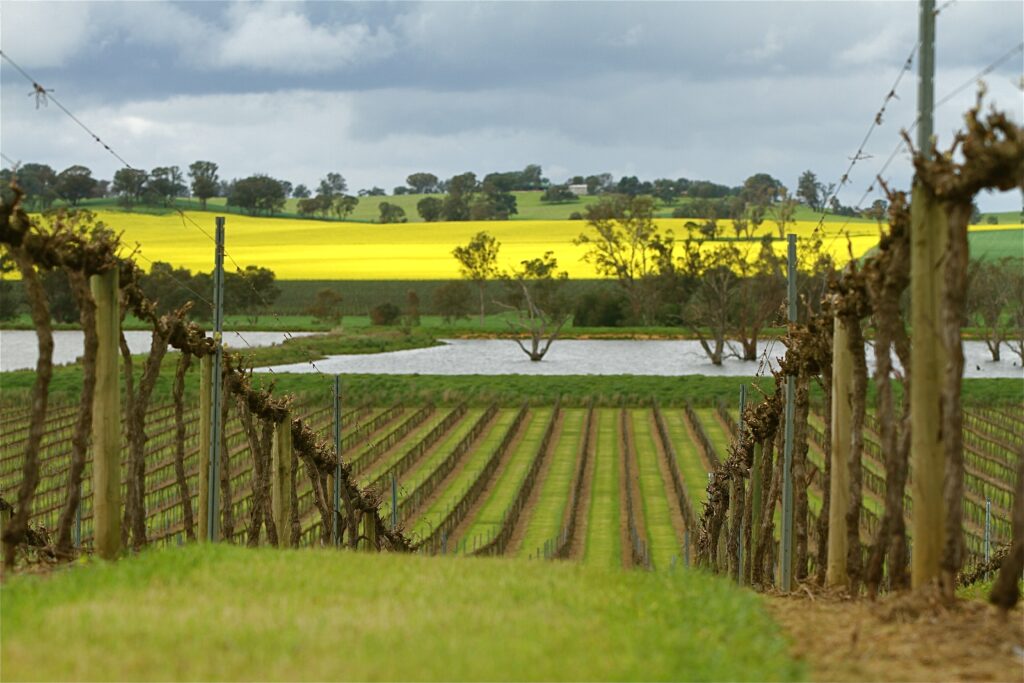Spring is a magical time in Rutherglen, with the vineyards in particular a hive of activity.
For winemakers, spring marks the shift from winter dormancy to reawakening.
In the vineyard, the groundwork for harvest is laid and important transitions occur, from de-acclimation, bud burst and flowering, to cover crops, vine replanting and more.
As the season progresses, soil temperatures begin to warm, sap begins coursing through the vines and they awake from winter dormancy to begin a new growing season. The vines flower, producing an amazing scent across the vineyard and then produce tiny bunches. By late in spring the fruit sets.
Fun fact. Vines are self-fruitful, which means that they self-pollinate without bees or wind. Each flower bears a single grape that protects the plant’s evolutionary insurance policy, its seeds.
But there’s other things happening in the vineyard, not just bud burst and the endless pursuit of the next vintage.

Spring is the ideal time to plant cover crops between vineyard rows, creating a symbiotic living ecosystem that brings life to the vineyard.
There’s also the laborious task of desuckering which begins in earnest as the season progresses, removing unwanted shoots that pull water, energy, and nutrients from developing fruit.
Toward the end of spring, shoot growth becomes unwieldy. Vines meant for trellises are lifted off the ground with moveable wire and set into an upright position. Trellis systems have multiple benefits. They lift heavy fruit off the ground, maximize sun exposure and airflow, and make maintenance passes and harvesting easier.
Whilst spring is a time for rejuvenation it also comes with some risks, in particular late-season frosts which have the potential to damage new buds and young growth. Frosts not only pose a risk to the current season’s crop, but due to the perennial nature of grapevines, can also influence the productivity of vines for several seasons into the future.
As summed up by the team at Pfeiffer ‘spring is the most crucial and worrying time of the whole year. Being on the plains west of the Great Divide, we are subject to the cold night temperatures under the big expanse of clear night skies and that means frost.’

Spring is also the ideal time to replant in the vineyard. There’s a fair amount of work in this; first the rows must be ripped and mounded. Next, end posts for the trellis wires are positioned followed by location of intermediate posts along the rows. The actual planting has to be done by hand; each little rootling paced carefully into pre-prepared holes. So, a lot of work!
This is something that Morris Wines knows only too well, having spent the last six months preparing their Knights vineyard for the planting of new Muscat vines having transplanted around 5,000 vines from this vineyard to the Mia Mia vineyard a year ago. It’s been a busy time at Morris having also installed irrigation on the Mia Mia vineyard for the first time in 165 years!
Wow, a super busy time in Rutherglen but as the saying goes, every day is a step closer to the next vintage!
